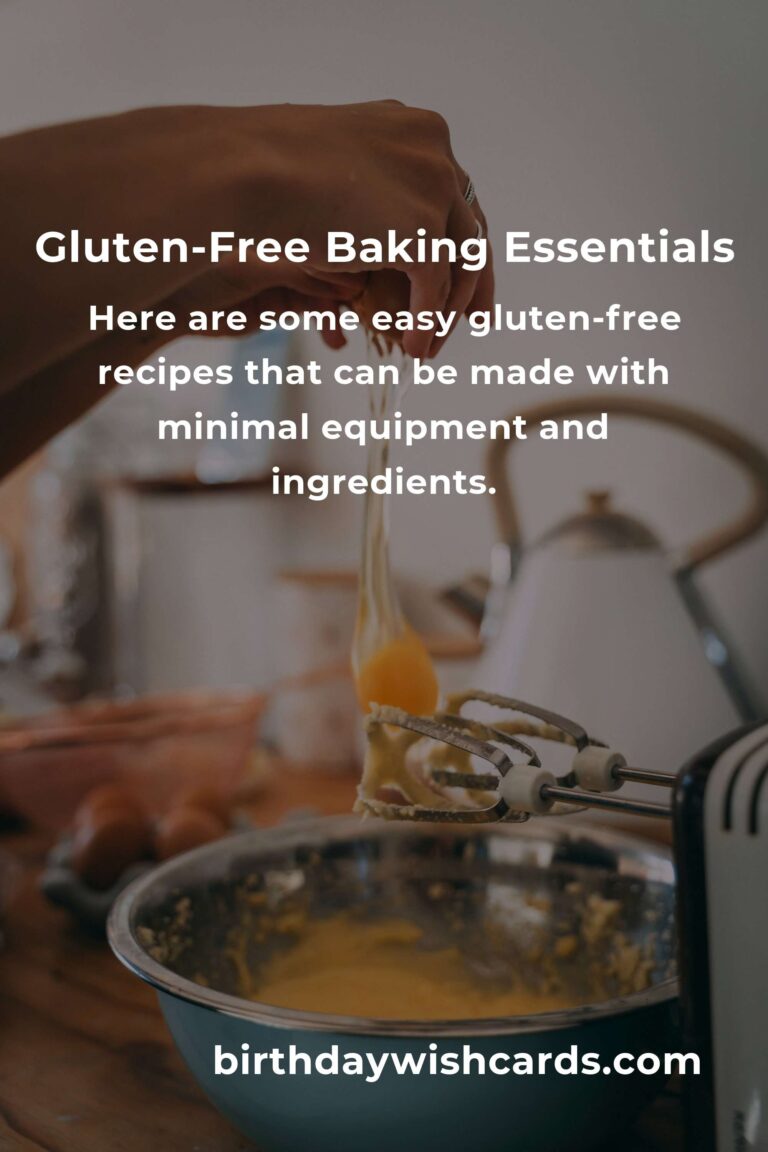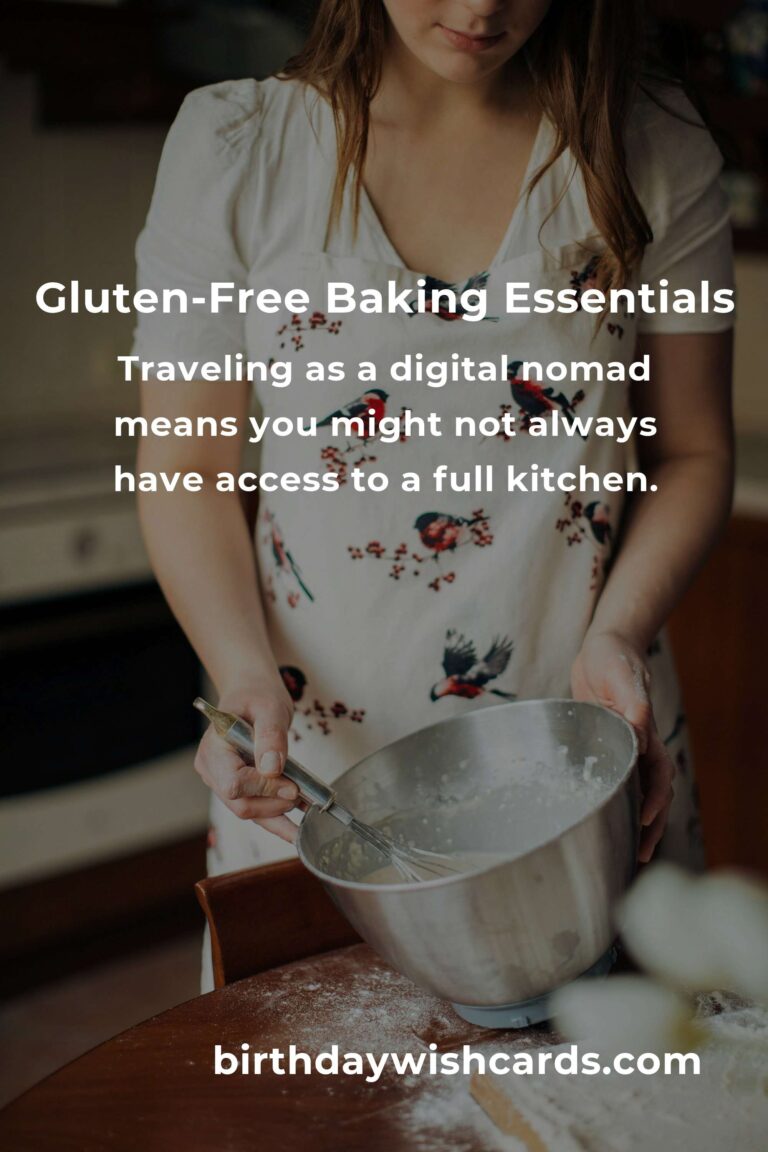
In today’s fast-paced world, digital nomads are constantly on the move, exploring new destinations while maintaining their work commitments. Adapting to different environments often means adjusting to various dietary needs, particularly for those who are gluten intolerant or choose to follow a gluten-free diet. Gluten-free baking can be a challenge, especially when you’re away from the comforts of a well-stocked kitchen. However, with the right strategies and tools, digital nomads can enjoy delicious gluten-free baked goods wherever they are.
Understanding Gluten-Free Baking
Gluten-free baking involves using alternatives to wheat flour, which contains gluten, a protein that gives baked goods their structure and elasticity. Without gluten, achieving the desired texture and taste in baked products can be tricky. Common gluten-free flours include almond flour, coconut flour, rice flour, and oat flour. Each has its unique properties, and often, a combination of these flours yields the best results.
Essential Ingredients for Gluten-Free Baking
For digital nomads, keeping a compact yet versatile set of ingredients is crucial. Here are some essentials:
- Almond Flour: Offers a nutty flavor and moist texture, ideal for cakes and cookies.
- Coconut Flour: High in fiber and requires more liquid, suitable for dense baked goods.
- Rice Flour: A staple in many gluten-free recipes, providing a light texture.
- Oat Flour: Adds a chewy texture and mild flavor, great for muffins and pancakes.
- Xanthan Gum: A binding agent that mimics gluten’s elasticity, essential for bread and pizza doughs.
- Baking Powder and Baking Soda: Crucial for leavening and achieving the right rise in your baked goods.
Tools for the Mobile Baker
Traveling as a digital nomad means you might not always have access to a full kitchen. Here are some portable tools to help you bake on the go:
- Portable mixer: A small, battery-operated hand mixer can be a lifesaver for blending ingredients.
- Measuring cups and spoons: Essential for accuracy, especially with gluten-free baking.
- Mini oven or toaster oven: Compact and versatile, perfect for small batches of baked goods.
- Silicone baking mats: Reusable and foldable, they fit easily in a backpack.
Recipes to Try
Here are some easy gluten-free recipes that can be made with minimal equipment and ingredients:
Gluten-Free Banana Bread
This simple recipe requires:
- 3 ripe bananas
- 2 eggs
- 1/2 cup almond flour
- 1/2 cup oat flour
- 1 teaspoon baking soda
- 1/4 cup honey
Mash bananas, mix all ingredients, and bake in a preheated mini oven at 350°F for 25 minutes.
Almond Flour Cookies
Ingredients:
- 1 cup almond flour
- 1/4 cup coconut flour
- 1/4 cup butter or coconut oil
- 1/4 cup sugar or honey
- 1 egg
Mix ingredients, shape dough into balls, flatten slightly, and bake in a mini oven at 350°F for 10 minutes.
Tips for Successful Gluten-Free Baking
Here are some tips to ensure your gluten-free baking is a success:
- Always check for cross-contamination and ensure your ingredients are certified gluten-free.
- Experiment with different flour combinations to find your preferred texture and flavor.
- Use precise measurements, as gluten-free flours can behave differently from traditional wheat flour.
By understanding the basics of gluten-free baking and equipping yourself with the right tools and ingredients, you can enjoy delicious and satisfying baked goods no matter where your digital nomad lifestyle takes you.
Gluten-free baking involves using alternatives to wheat flour, which contains gluten.
For digital nomads, keeping a compact yet versatile set of ingredients is crucial.
Traveling as a digital nomad means you might not always have access to a full kitchen.
Here are some easy gluten-free recipes that can be made with minimal equipment and ingredients.
#GlutenFree #Baking #DigitalNomads #HealthyLiving #Travel

